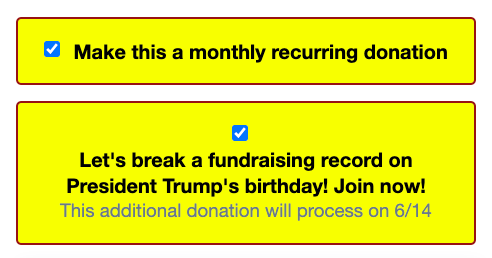When nudge turns to sludge: Trump’s donation campaign
From the French Revolution to Spiderman, history has taught us; ‘with great power comes great responsibility’. So when behavioural science crosses ethical boundaries, #nudge turns to #sludge (Thaler, 2018).
Shane Goldmacher in a recent New York Times article tells how choice architecture “steered” Donald Trump supporters into making recurring donations on a fundraising website.
Goldmacher details how the fundraising campaign launched with a pre-checked “Make this a monthly recurring donation” box on the donation page. All donors by default were opted-in to automatic contributions. Later, an additional pre-checked box was introduced to “break a fundraising record on President Trump’s birthday!”





As Election Day approached, the wording on these two pre-checked boxes grew increasingly convoluted. Undoubtedly, there were donors who were deterred from reading and manually un-checking the box. Some “felt like it was a scam,” only realising what they had signed up for after seeing their bank statements.
This fundraiser was incredibly effective.
We are big supporters of behavioural science in the commercial world. However, this news story is an important reminder about the ethical dimension underlying what we do. It’s crucial that behavioural strategists (like ourselves) and our clients know where to draw the ethical line. If you overstep this, you risk your long-term relationships for the sake of short-term gain.
Goldmacher, S. (2021, April 3). How Trump steered supporters into unwitting donations. The New York Times. https://www.nytimes.com/2021/04/03/us/politics/trump-donations.html
Thaler, R. H. (2018). Nudge, not sludge. Science, 361(6401), 431. https://doi.org/10.1126/science.aau9241
